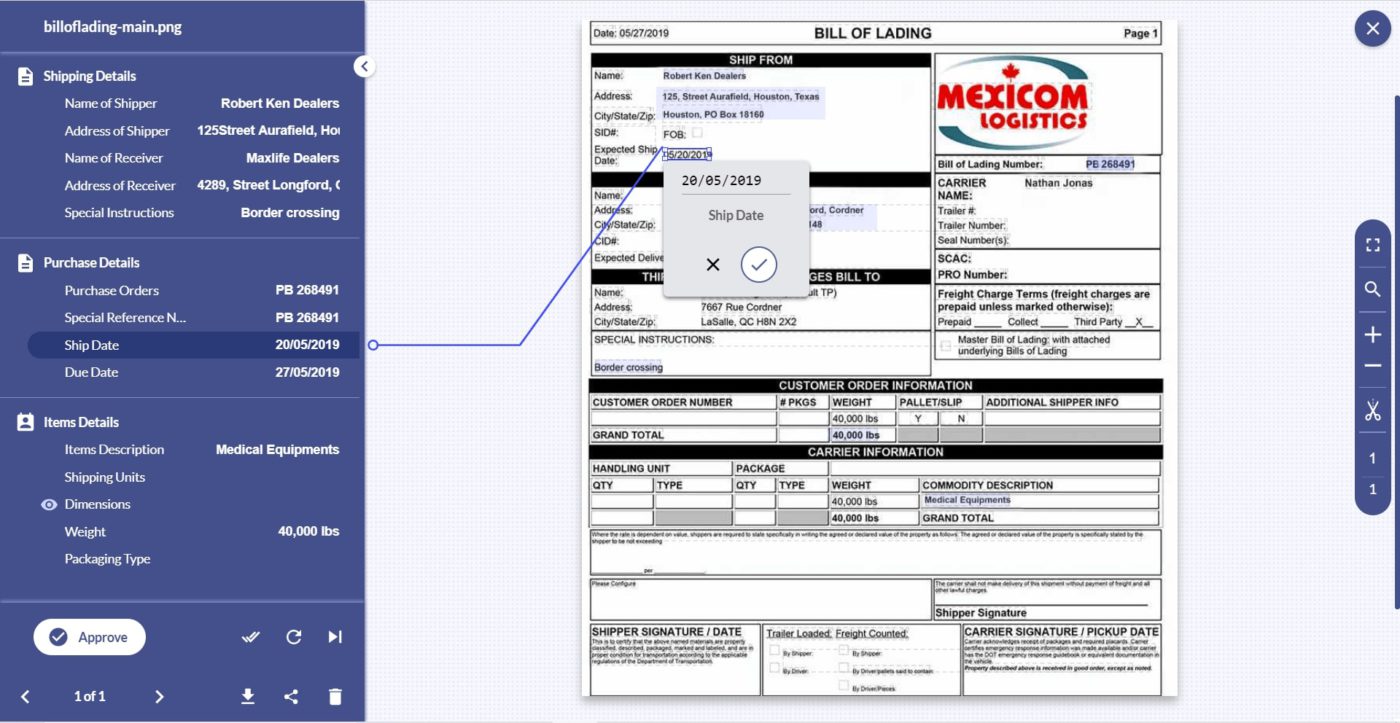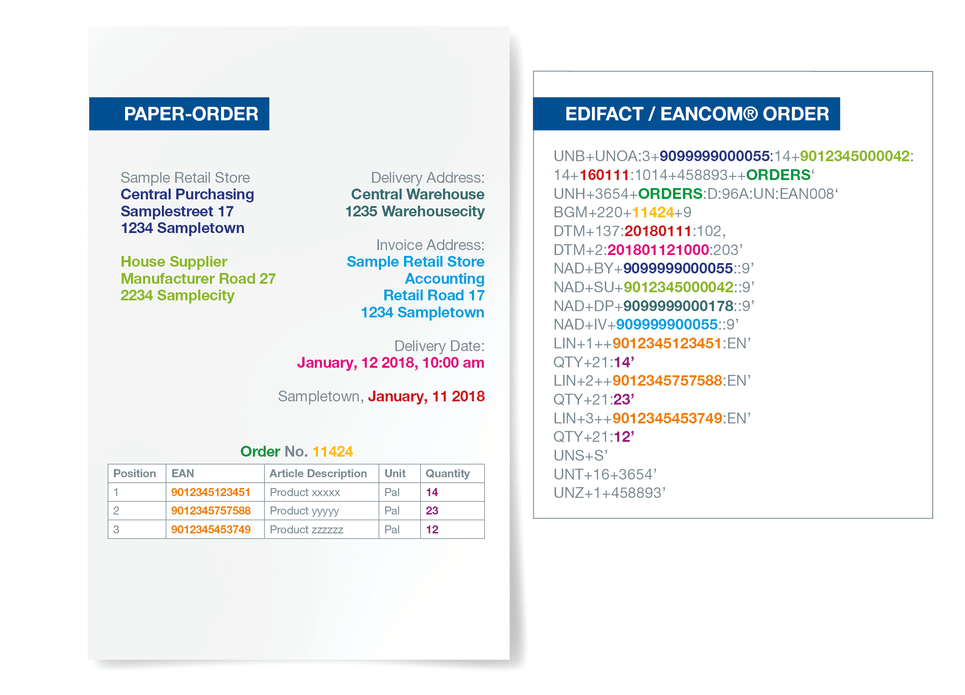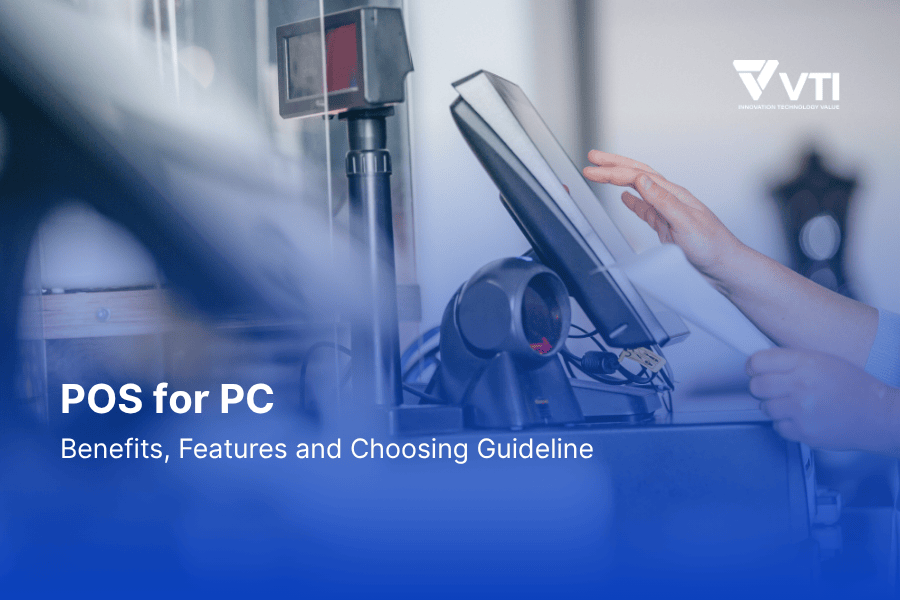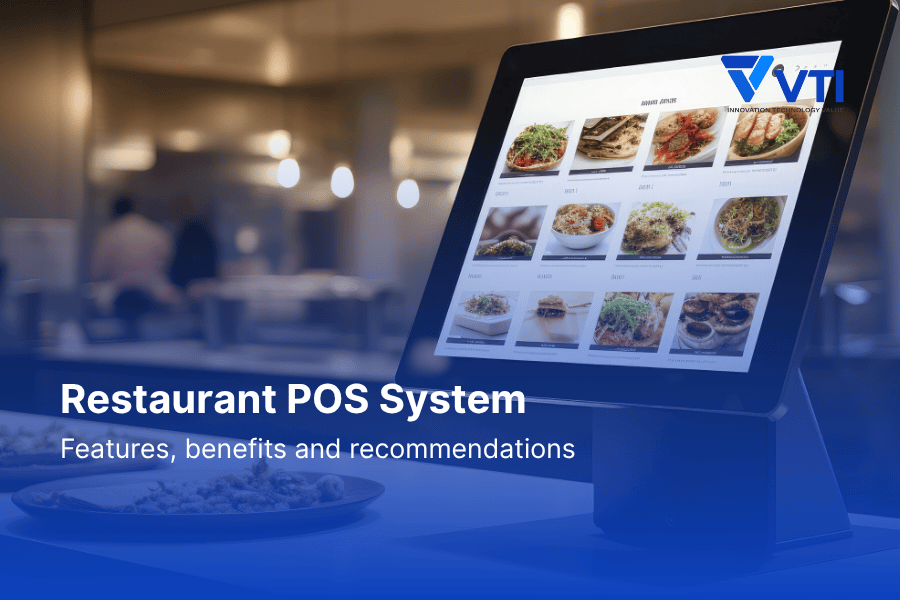The world has witnessed a surge in the logistics market over the last decade, from EUR 102 billion (2009), to EUR 151.9 billion (2019). However, the global supply chain confronted huge discorruption during the time of COVID-19: declined volume, incapacity, and delayed deliveries. There was no space for inefficiencies – this is where technology came into the fray. According to a survey of 300 logistics professionals by Shipping and Freight Resource, among the strategy changes companies indicated they will make as a result of the pandemic, 67% of the respondents expressed they would invest in technology. Logistics vendors did their research and many decided to start their digital transformation journey with document automation by OCR in logistics management.
1. What is OCR (Optical Character Recognition)?
OCR, short for Optical Character Recognition, is a technology solution that converts a text image format (PDF, JPG, JPEG, PMB, etc.) into a machine-readable text format.
For instance, when an employee scans a form or receipt, his computer saves that scan as an image file. This means he cannot use any text editor to adjust, search, or count words in an image file. However, if he takes advantage of OCR to convert images into text documents, where the content will be stored as text data, he can complete all of the above.
Not only printed and typed letters, but this technology also recognizes symbols and handwriting.
2. How OCR in logistics management works
Algorithms applied in OCR technology can be divided into two categories: pattern recognition and feature extraction.
Pattern recognition
With this algorithm, the software can recognize an entire character by comparing the character it “sees” with the characters it “remembered”. The software will process and find the “appropriate” characteristics for that character. However, methods applying this algorithm encounter difficulties in dealing with different fonts. There have in the past appeared fonts specifically designed to increase OCR accuracy (eg: OCR-A font).

Feature extraction
The method using this algorithm is much more sophisticated. Instead of recognizing the characters as a whole, the software will try to find features that help detect characters (points, angles, curves, etc.). Modern machine learning algorithms can learn and extract extremely abstract features that even humans cannot understand. They can also recognize different fonts in different conditions.
3. How OCR expedites Logistics
Automate data entry via data extraction
The logistics industry has to deal with huge loads of paperwork and data: invoices, bills of lading, customs documents, packing lists, certificates of origin, etc. Data from these documents are manually extracted and updated in the management system. Manual data processing is inevitably time-consuming and error-prone. This has long created bottlenecks at almost every stage of the process. Downtime between stages, a typo in the assignee address, or mistyping a number in the postal code can all ruin a delivery, causing hours and dollars to get the mistake fixed.
OCR in logistics management proves itself a sound solution to this trouble since it enables automation in data collection. The technology as a result not only accelerates the data entry procedures but also ensures higher accuracies in submitted documents.
Take Goods Receipt for example OCR in logistics management allows scanning of the purchase order number, manufacturer’s serial numbers, delivery notes, customs documentation, etc. using a mobile device. The mobile solution will directly upload this data into the ERP system.

Validate and control data in loading and transport
The loading/unloading process involves outbound transport resources – that is to say, drivers, pallets, trucks, containers, etc. Logistics managers find the need for control and visibility of deliveries to customers. This is where OCR in logistics management comes to help. The technology scans the vehicle license plate, trailer number, container number, driver’s license, etc., ensuring the correct batch of goods is loaded on the designated truck and attached with the shipping documentation that accompanies the vehicle. In other words, OCR in logistics management gives logistics managers accuracy and visualized tracking of the third party’s part of the supply chain.
Automate workflow
Logistics documents are currently shared in PDF or other printable formats, which can be shared online via mail. However, people involved in the procedure find it difficult to extract the necessary information. OCR in logistics management allows information to be captured and validated from PDF files and triggers EDI messages therefrom, building a coherent information flow.

Track information for Returns
Returns sometimes pose a headache to logistics managers, since they are difficult to control. Most of the time engineers create a work order beforehand without knowing which parts they will need, so any redundant spare parts will be sent back to the warehouse as a return. The problem is that these returns are often without paperwork, so warehouse operators would therefore have a hard time figuring out which part is which. However, OCR in logistics management offers innovative traceability by simply scanning the serial number and immediately coming back with details of the part, smoothing the way into improving control on these items.
Streamline data storage and sharing
Logistics employees take hours to handle paper documents, from taking them out of a material archive, and processing the information, to handing the documents over to other relevant departments. These tasks are repetitive, non-value, and consume plenty of paper. OCR in logistics management digitizes documents, classifies them into categories, and stores them in a centralized management system. Text detection is integrated with Natural Language Processing (NLP) technology, automating the process of recognizing and classifying documents into structured categories (bills of lading, certificates of quality, etc.) and unstructured (contract, email, etc.), or transferring to suitable processing procedures. This enables an electronic facility, which can be accessed remotely, hence reducing the need for physical presence.
4. Adopt OCR in logistics management with VTI
VTI provides one-stop software development solutions with strong expertise in AI, including OCR in logistics management and many other advanced AI applications, for digital transformation and business growth.
Finding affordable effective technology for your logistics business can be a little tricky, but if you weigh the pros and cons, you might get the answer you are looking for – the 4.0 market is not waiting for who is left behind. If you have any doubts or worries, we recommend our consulting services. Contact us now and get started with your digital transformation journey.
If you have any further questions, do not hesitate to contact us.
VTI – Innovation Technology Value
Hotline: (+84) 24 7306 9996
Email: [email protected]
Facebook: VTI
![[FREE EBOOK] Strategic IT Outsourcing: Optimizing Cost & Workforce Efficiency](https://vti.com.vn/wp-content/uploads/2023/08/cover-mockup_ebook-it-outsourcing-20230331111004-ynxdn-1.png)





